2022 Holiday Shopping: The Ultimate Customer Experience Guide for Retail
Published on Sep 21, 2022

Retailers are prepping for the challenges of another unprecedented holiday season as global events like inflation, energy caps, political instability, union strikes, and war continue to impact consumer spend across the world. SMG research shows 60% of consumers in the UK are planning to spend less this holiday season, with 40% of US consumers preparing to scale back on their holiday shopping.
And these financial concerns are impacting consumers across all demographics. CNBC reports even higher-income consumers (those making at least $100K) are under financial stress and planning to cut back on spending. And a study from McKinsey shows similar results with consumers twice as pessimistic about the economy today than they’ve been throughout the pandemic—even though US consumers have twice as much in cash savings than they did before 2020.
Though these consumer cutbacks have impacted industries across the board, restaurant and non-essential retailers are really feeling the impact.
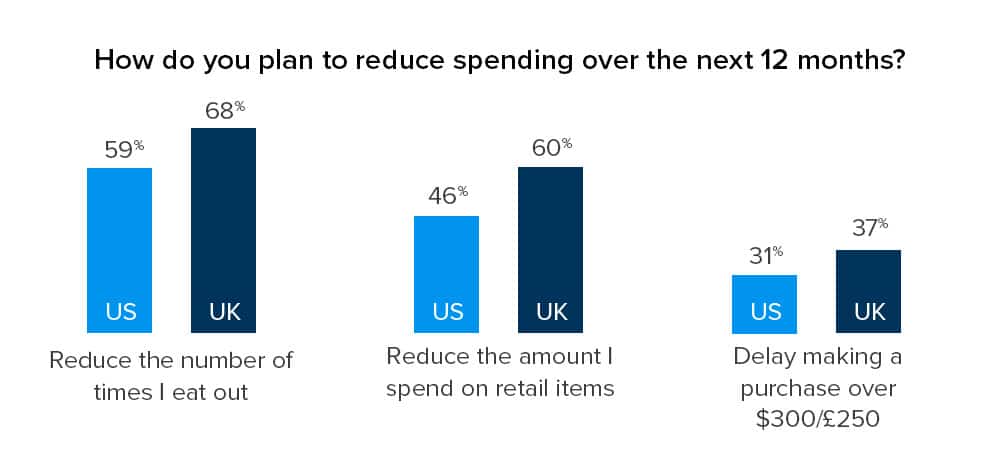
While this isn’t great news, it doesn’t mean all bets are off and the holidays are cancelled. What it does mean is retailers are going to have to try even harder to drive both in-store + digital traffic conversions and do it better than their competitors.
Key Consumer Shopping Trends and Retail Strategies for Success
To help set up your brand for success, we’ve compiled the top consumer trends, retail success stories, and answers to your most pressing holiday CX questions like:
- With financial concerns high, what can we expect from consumers this holiday season?
- When it comes to online vs. in-store shopping, what should we prioritize?
- Where will consumers allocate the majority of their spend?
- How can CX help us meet our EOY goals and improve business outcomes?
Retailers should reference this blog as they prepare their holiday strategy, leveraging these CX best practices to better position themselves for a successful holiday shopping season.
Expectations and Preparations for Increased In-Store Traffic This Holiday Season
Recent SMG research shows more than half of consumers plan to shop in-store this holiday season—and these customers have high expectations for quick and convenient visits. Unfortunately, the CX key drivers that tend to take the biggest hit during high traffic times are “Availability of Assistance” and “Speed of Checkout.”
To prepare for busy in-store traffic and to meet the demands of in-person customers, retailers should take a close look at their self-checkout offerings, ensuring the tech is functional and up to date, and the process is as smooth and seamless as possible. Also, if you brand uses mobile POS, have an action plan in place to prevent customers from abandoning their cart if they see a long check-out line.
It’s also essential to have a prepared front-line staff ready to offer assistance to in-store customers. Data shows when a customer receives quality assistance, they spend more—but during busy holiday times, fewer customers are assisted. Be sure you’re maximizing your talent pool, scheduling, and service model to provide the level of in-store support your customers are expecting.
Retail Success Story: Creative Approach to Improving In-Store Assistance During Holiday Traffic
As a brand that prides itself on hard work, honesty, and value, one SMG client wanted to make sure it was delivering that promise to customers every day, all year long. Knowing the upcoming holiday season would bring an increase in traffic, the brand asked their SMG team for insight on the previous year’s peak season performance and its biggest opportunities to improve the customer experience.
Analysis revealed Availability of Assistance and Checkout Experience were the top drivers of customer satisfaction. Unfortunately, these two measures took a big hit for the brand with a 5-ppt decline during the holiday season—especially when compared to SMG’s industry benchmark, which saw just a 1-ppt drop.
To help close the gap, the brand not only ramped up staff training, but it came up with a creative solution to provide customers with additional support during peak times. The retail brand hired employees’ friends and family members to execute floor tasks, freeing up the front-line staff to focus on customer assistance.
The plan worked. The specialty retailer saw an 8-ppt increase in comp sales, along with improved Availability of Assistance and Checkout Experience scores.
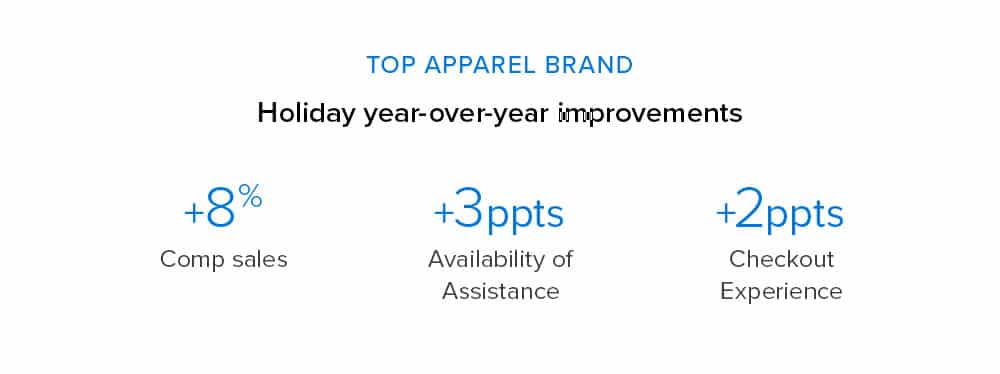
Consumer Perception of Value Beyond Just Lowest Price This Holiday Season
Consumers are placing an emphasis on value this season, but that doesn’t always mean “spend less.” Our research shows consumers’ perception of value is first impacted by a customer’s overall experience—then cost.
Yes, consumers still favor deals and special promotions—but not in sacrifice of high quality or strong service, which are two critical elements of the value equation and important factors in driving purchase decisions.
Define what value means to your customer this holiday season and package an offering that delivers against that.
Retail Success Story: Tractor Supply Co.'s New Contactless Curbside Pickup Offering
Due to the pandemic and subsequent safety regulations for essential retailers, Tractor Supply Co. understood it needed to shift how customers interacted with the brand. To keep its edge in the competitive retail space, Tractor Supply implemented curbside service, providing customers with a new contactless option.
Location-level analysis showed curbside pickup quickly became the primary way customers interacted with the brand. Digging deeper into the data, the team discovered most issues with the curbside experience centered around communication—both internally among team members and externally with customers—regarding wait times upon arrival for pickup.
With SMG’s research showing 3 out of 4 consumers planning to do their holiday shopping online, Tractor Supply was eager to make improvements on speed of service at this crucial touchpoint. The brand took action by:
- Investing in headsets for employees, providing more direct lines of communication
- Testing curbside drive-thru lanes + front-of-store customer service desks in select locations
- Updating mobile app to allow curbside customers to check in upon arrival
- Creating dedicated pick-up locations + locker staging areas
- Reallocating labor leading up to holiday season
The results were significant, with 3 quarters of triple-digit e-commerce growth, 130% YoY comp sales, and improvements in Overall Satisfaction scores.
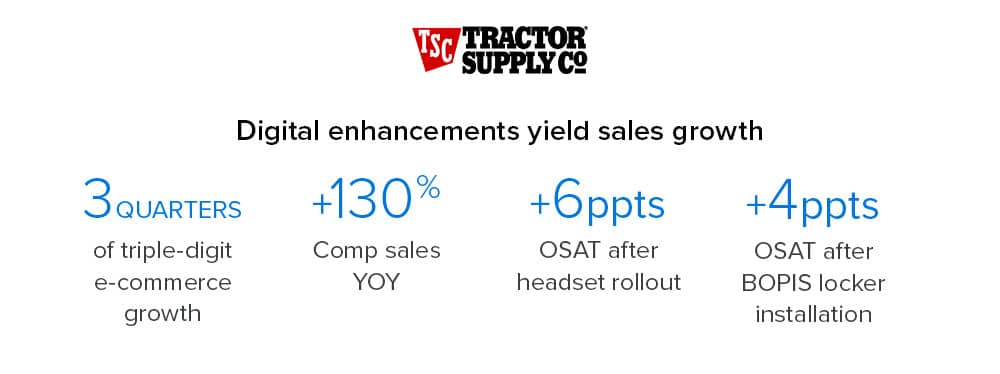
Consumer Preferences for Free vs. Fast Delivery Options This Holiday Season
While we’re on the topic of value, our research has uncovered one area where cost really matters—88% of consumers prefer free delivery (compared to 12% who prioritize fast delivery). Though this could change as we get closer to the holidays and delivery dates become more pressing for those last-minute shoppers, consumers shopping ahead will look for delivery options that don’t include shipping fees.
It's also important to note customers who spend money on delivery are harder to please and typically less satisfied with their experience. So if your brand can’t swing free delivery, be sure you are accurately communicating shipping costs and delivery dates and setting expectations right away.
Another option is to lean into third-party delivery partnerships. Brands like Tractor Supply, JCPenney, Macy's, Office Depot, and Walgreens are teaming up with third-party delivery vendors (e.g., Shipt, DoorDash, Instacart, Postmates) to facilitate.
Retail Success Story: Specialty Retailer Finds Tiered Delivery Pricing Reduces Complaints
When one specialty retail brand noticed something was hurting customer satisfaction around delivery, it had to act quickly and effectively to see how it could deliver on its mission to improve the customer experience across every touchpoint.
By matching scores to specific transactions, the brand learned satisfaction with delivery was directly related to spend: those customers who spent more on their initial purchase were more dissatisfied with delivery.
The numbers made it clear the add-on of a flat delivery fee was taking away from customer satisfaction in a big way.
Customers may be sensitive to extra charges, but they’re more forgiving when they feel like they have options. When the brand rolled out a 4-tier pricing model for delivery, which included a free option, it saw big results—more than 1 in 3 customers opted for the free option and Satisfaction with Cost of Delivery improved by an impressive 23-ppts.
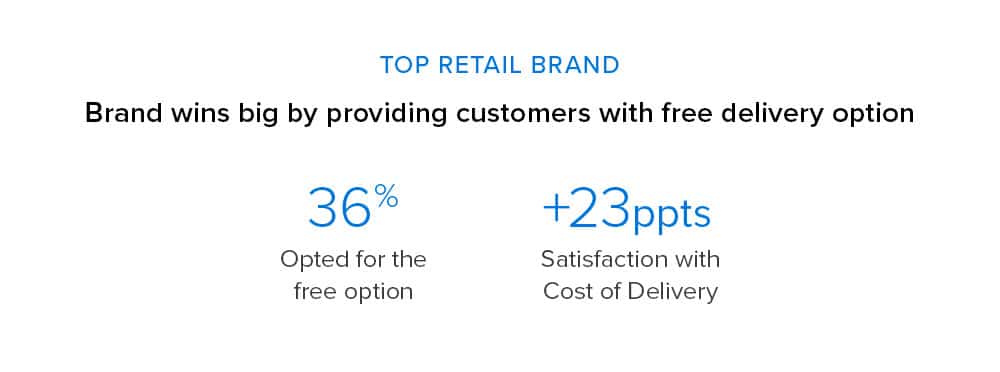
Cross-Channel Shopping Trends and Strategies for Consistent CX
Earlier we mentioned the uptick of in-store shopping—with more than half of consumers expecting to shop in person this holiday season. But this doesn’t negate the importance of a strong digital experience. More than 30% of consumers are planning to shop online more by the end of the year and nearly half are browsing online before their trip in-store (citing price comparison as their number one reason for cross-channel behavior).
We’re also seeing an increase in BOPIS (buy online, pick-up in store) orders and those customers have very high expectations of speed of service. When picking up their online order, BOPIS customers expect it to be ready in 6 minutes or less once they arrive at the store.
Meeting these customer expectations and being able to drive conversion rates (both in-store and online) is essential. A decrease in consumer spend means retailers have to work harder to capitalize on the customer visits they do get, so customers don’t abandon their order and take their business elsewhere.
Retail Success Story: Topps Tiles Closes Gaps in Cross-Channel Strategy
Because Topps Tiles is dedicated to providing an outstanding experience across all touchpoints, the specialty retailer was concerned to find inconsistencies in customer satisfaction. Though the in-store experience scored consistently high, delivery and online experiences seemed to be missing the mark.
With a website relaunch in flight, the brand was keen to use customer feedback to drive targeted improvements to the digital experience and close the gap on their cross-channel strategy.
A comparison analysis of location-level data + post-fulfilment data showed delivery satisfaction was 19-ppts lower than in-store satisfaction. Additionally, customers with online delivery orders experienced more problems than customers with in-store delivery orders—often due to missing the customer’s requested delivery date + timeslot. A deeper dive into the digital experience data also revealed Delivery Options Offered as the lowest-performing measure.
To enhance the online experience, the brand knew it had to better manage the customer’s delivery expectations at the point of purchase.
The brand took action by adding more thorough delivery details + availability information on product pages to manage expectations around stock levels and delivery timing. It also implemented text + email updates on the delivery process to keep customers informed of their order status.
The enhanced communication plan worked, with a 7-ppt increase in Availability of Products and a 9-ppt increase in Delivery Options Offered.
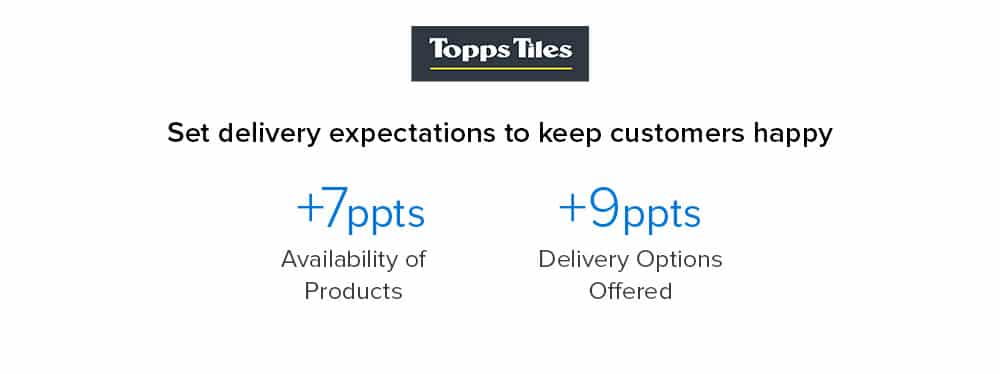
Overcoming Challenges of the 2022 Holiday Shopping Season
This holiday season will not be without its obstacles. But brands that understand what their customers want and can deliver the unique value offering consumers are seeking will not only win their business over the next few months but will solidify loyalty into next year and beyond.
But retailers without the right CX strategy will struggle to uncover the needs of their customers—and lose business to competitors that are leveraging customer feedback into business-changing insight.
Which one will you be? Check out this guide to learn the ins and outs of an ROI-generating CX program and see if your current strategy is producing the business results you deserve.
Related articles

Key Strategies to Create Personalized In-Store Experiences
Customers now expect personalized digital experiences that are aligned with visiting brick and mortar locations. Here is how to maintain consistency.

Top Trends for your Omnichannel Restaurant Strategy
Omnichannel restaurant strategies need to consider both customers who use tech and those who prefer in-person experiences. Here is how to strike that balance.

2 Restaurant Brands that Demonstrated Customer Experience ROI
The restaurant industry is having to work even harder to meet the evolving needs of today’s consumers, who are reporting heightened financial concerns due to the volatile economy. These concerns are r